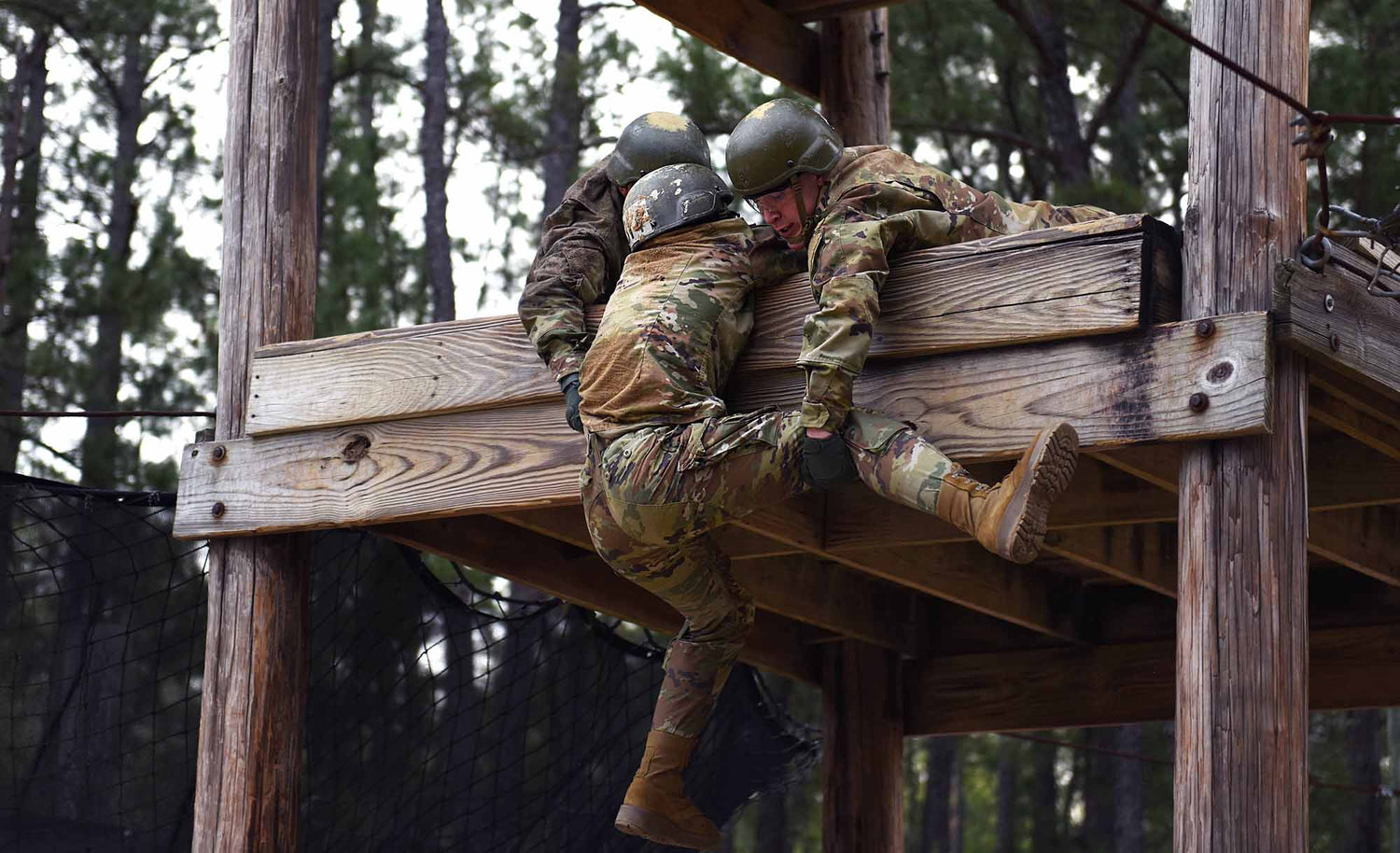Army infantry recruits with the 2nd Battalion, 58th Infantry Regiment tackle the confidence course on Fort Benning, Georgia, March 29. The course is a series of obstacles meant to build teamwork and confidence as the recruits continue through basic training. (U.S. Army photo by Christopher Hurd)
2023 marked a challenging epoch in the realm of military recruitment in the United States, but Air Force Maj. Gen. Pat Ryder, during a recent press briefing, indicated a shift towards optimism. As the Pentagon's spokesperson, Ryder acknowledged that while recruitment remains a steep climb, adaptive strategies are being implemented by the armed services. In the previous fiscal year, only the Marine Corps and the Space Force achieved their recruitment targets, underscoring the broader issue at hand.
A critical concern highlighted by officials is the eligibility of young Americans for military service. Merely 23 percent of individuals aged 17 to 24 qualify for military enlistment, with an even smaller fraction exhibiting a willingness to serve. This scenario is compounded by the military's reduced visibility in many communities, with fewer young people having personal connections to anyone in the armed forces.
Despite these challenges, the military branches are actively seeking new methods to attract recruits. The COVID-19 pandemic significantly hampered traditional recruitment methods, particularly face-to-face interactions which are vital for recruitment efforts. However, this landscape is evolving, with recruiters exploring various approaches to engage with the youth and highlight the opportunities and benefits of military service.
Specific initiatives have been introduced to aid in recruitment. The Army, for instance, has implemented a program assisting potential recruits to meet the standards for enlistment, with a reported success rate of 95 percent for participants. The Air Force has launched aviation camps, offering young people insights into life in the service and the range of aviation roles available.
Secretary of Defense Lloyd J. Austin III has acknowledged the complexity of the recruitment challenge, emphasizing that it is a long-term issue that requires continued effort and innovation. Concurrently, the Department of Defense and the military branches are working to educate the public about military life, utilizing platforms like airshows, parades, sporting events, and base tours. The goal is to facilitate conversations that demystify military life, breaking down stereotypes and providing a realistic view of service.
In addressing the recruitment challenge, the U.S. Army has initiated a comprehensive overhaul of its recruitment strategy. This overhaul is particularly focused on young individuals who have spent time in college or are early in their career paths. A significant element of this strategy is the formation of a professional recruiting force, moving away from the practice of assigning soldiers randomly to recruitment duties.
Army Secretary Christine Wormuth has stated that the transformation of recruitment strategies is a long-term endeavor, with some changes set to begin within 90 days. The Army has not met its annual recruitment goals since 2014, and in the last fiscal year, it fell short by 15,000 recruits from its target of 60,000. This shortfall occurred in a competitive job market and was exacerbated by the pandemic's disruption of traditional recruitment channels.
Nevertheless, the Army achieved a strength of 452,000 active-duty soldiers, including 4,600 recruits signed for future contracts. Gen. Randy George, the Army's Chief of Staff, emphasized that tailored messaging and marketing are crucial for addressing recruitment challenges. The Navy and the Air Force also fell short of their recruitment goals but performed better than earlier predictions. The Marine Corps and Space Force, on the other hand, met their targets, with the Marines attributing their success to the selection of effective recruiters and strategic placement of recruitment stations.
The Army's recent increase in recruitment is seen as a temporary success, attributed to new programs and benefits. However, Wormuth underscores the need for systemic changes in how the Army approaches the labor market and promotes military service as a career option. She pointed out the necessity to extend recruitment efforts beyond high school graduates, targeting a broader labor market, including those with more than a high school education.
As part of this strategic shift, the Army is transitioning to a professional recruiting workforce. This change is designed to mirror best practices in the private sector and will include the establishment of new military occupational specialties focused on talent acquisition. The goal is to create a more specialized and effective recruitment team.
Furthermore, the Army is planning to innovate in recruiting platforms, improve candidate experiences, and experiment with new methods to enhance knowledge about the Army. This approach includes establishing an experimentation team within the United States Army Recruiting Command (USAREC) to foster innovation and adapt to evolving trends in the labor market.
In enhancing recruitment policy decisions, the Army aims to establish an evidence-based learning capability at its headquarters. This initiative will involve data collection and program evaluation to inform policy planning and implementation.
The Army's recruitment leadership and structure are also undergoing realignment. The marketing functions and the entire recruiting enterprise will be consolidated under a proposed three-star command, reporting directly to the Army's top leaders. This restructuring aims to empower leaders with the necessary access and tenure to make a lasting impact.
Both Wormuth and George emphasized the importance of conveying the value of service and the opportunities presented by the Army. Despite the challenges in attracting new recruits, the Army consistently exceeds its retention goals, indicating a high level of job satisfaction among soldiers. The overarching message they aim to communicate is that the Army offers a unique opportunity to be part of something larger and make a meaningful contribution.
In conclusion, the U.S. military, particularly the Army, is undergoing significant changes in its recruitment strategies. These changes are comprehensive, targeting various aspects of the recruitment process from prospecting to policy implementation. The goal is to adapt to the changing landscape of the labor market and societal trends, ensuring that the military continues to attract a diverse and skilled workforce capable of meeting the nation's defense needs.




